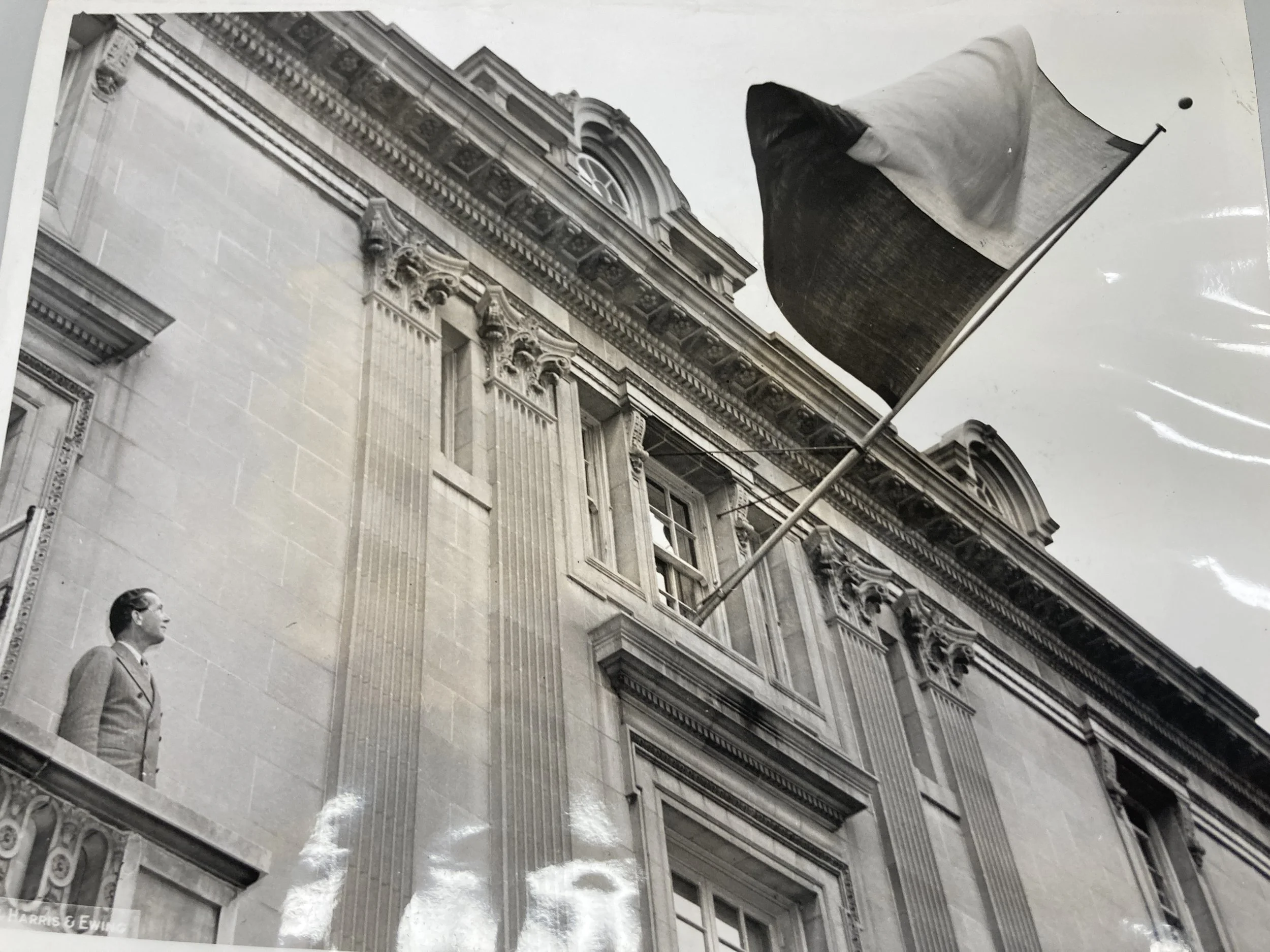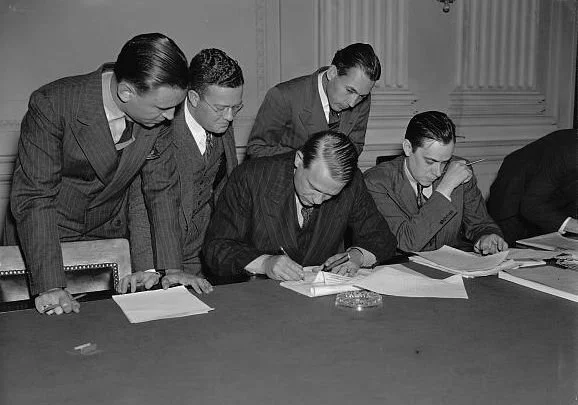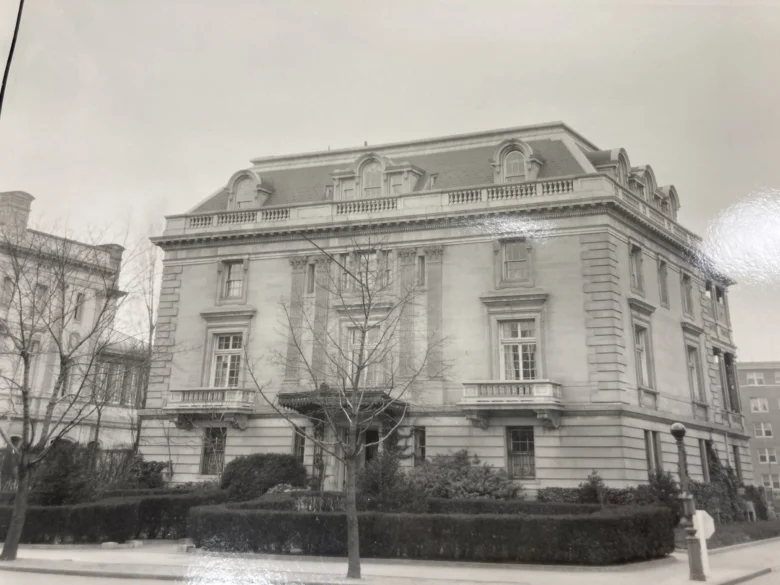“The House Un-American Activities Committee produced last night documentary evidence and testimony under oath that the Polish Embassy here has been a nest of spies.”
So begins an article in The Washington Post on April 24, 1949, which detailed the documents provided to the U.S. government by General Izyador Rudolf Modelski, described as a “former embassy official whose appointment backfired on Poland’s Communist regime.”
Unlike the birdhouse at the nearby Lithuanian Embassy, the “nest” wasn’t an architectural feature but an accusation that “at least two espionage networks” were operating out of the building at 2640 Sixteenth Street NW, one allegedly specializing in atomic secrets and the other allegedly “branching into Canada and Mexico.”
It was a decade after the controversial House committee was formed, ostensibly to investigate Communist and fascist organizations that had become active during the Great Depression. Critics claimed the committee was a partisan tool aimed at discrediting the progressive New Deal programs of President Franklin D. Roosevelt, which established the Civilians Conservation Corps, the Works Progress Administration, the Securities and Exchange Commission, and a slew of other programs that rescued the country from the economic impact of the Great Depression, but also dramatically enlarged the federal government.
By 1947, the House Un-American Activities Committee was notorious for its series of high-profile hearings that alleged an ambitious campaign in which Communists had infiltrated government schools, Hollywood, and most areas of life deemed to be particularly American. Future President Richard Nixon (“I am not a crook”) was a prominent member of the Committee. In October of that year, ten Hollywood screenwriters and directors refused to cooperate with the Committee’s interrogations, openly challenged the legitimacy of the Committee, and were jailed and blacklisted.
It was a period of such rampant fear-mongering and panic that it had its own name – The Red Scare – and along with classic artwork, a Steinway piano, and a heart encased in bronze, helped define the history of Washington’s oldest embassy.

Spying accusations against embassies are as old as embassies themselves, and the Polish Embassy is older than most. Unlike the Embassy of the Czech Republic, which by its own admission was forced to move locations because of a spy called Tisler, and other embassies that have moved locations over the centuries, the Polish Embassy has been in its current location since 1919, making it the city’s longest serving embassy among Washington’s diplomatic missions.
Bilateral relations between Poland and the United States were formally established after Poland regained its independence following World War I, with the U.S. recognizing the new Republic of Poland on January 22, 1919. The legation, which was one of the first foreign missions of the newly independent Poland, was upgraded to embassy status in 1930.
After Poland was invaded by Nazi Germany and the Soviet Union in 1939, the Polish Embassy in Washington represented the Polish government-in-exile, which operated out of London. Following World War II, Poland fell under Soviet influence, and the embassy came under the control of the communist government established in Warsaw.
Shortly after, it came to the attention of the House Un-American Activities Committee.
The Embassy of Poland was far from the only embassy investigated by the House Un-American Activities Committee; according to US Congressional records and the National Archives on Cold War Diplomacy, the Soviet, Czechoslovakian, and Hungarian embassies were all targeted with accusations ranging from promoting pro-Soviet propaganda to fostering relationships with American Communists, to spreading Communist ideology throughout the country. The investigations led to increased surveillance, diplomat expulsions, and further heightened tensions between the US government and the embassy at 2640 Sixteenth Street NW.

Part of a showcase of properties envisioned by Mary Foote Henderson as an Avenue of Presidents, the Polish Embassy on Sixteenth Street is in good company. Located in the heart of a cluster of buildings designed in collaboration with George Oakley Totten, it’s surrounded by the current and historic Cuban Embassy; the Former Residence of the Ambassadors of Spain, once that country’s embassy and residence; the Mexican Cultural Institute, which shares as a similar history as its Spanish neighbor, and the Embassy of Ecuador. It also shared some of the distinctly haphazard design challenges that are markers of Totten’s work.
The white limestone Beaux-Arts building with 17th and 18th century French architecture influences has had a few additions in the English style, including double-hung windows, six integrated balconies and two porches. As they pass through the embassy’s gate, visitors are greeted by a life-sized bronze statue of famed pianist and composer Ignacy Jan Paderewsi, who also served as the country’s Prime Minister in 1919 and later as the country’s head of the government in exile in 1940.
The interior, largely the same since The American Architect first described the house in 1911, is primarily in the English Renaissance style.
